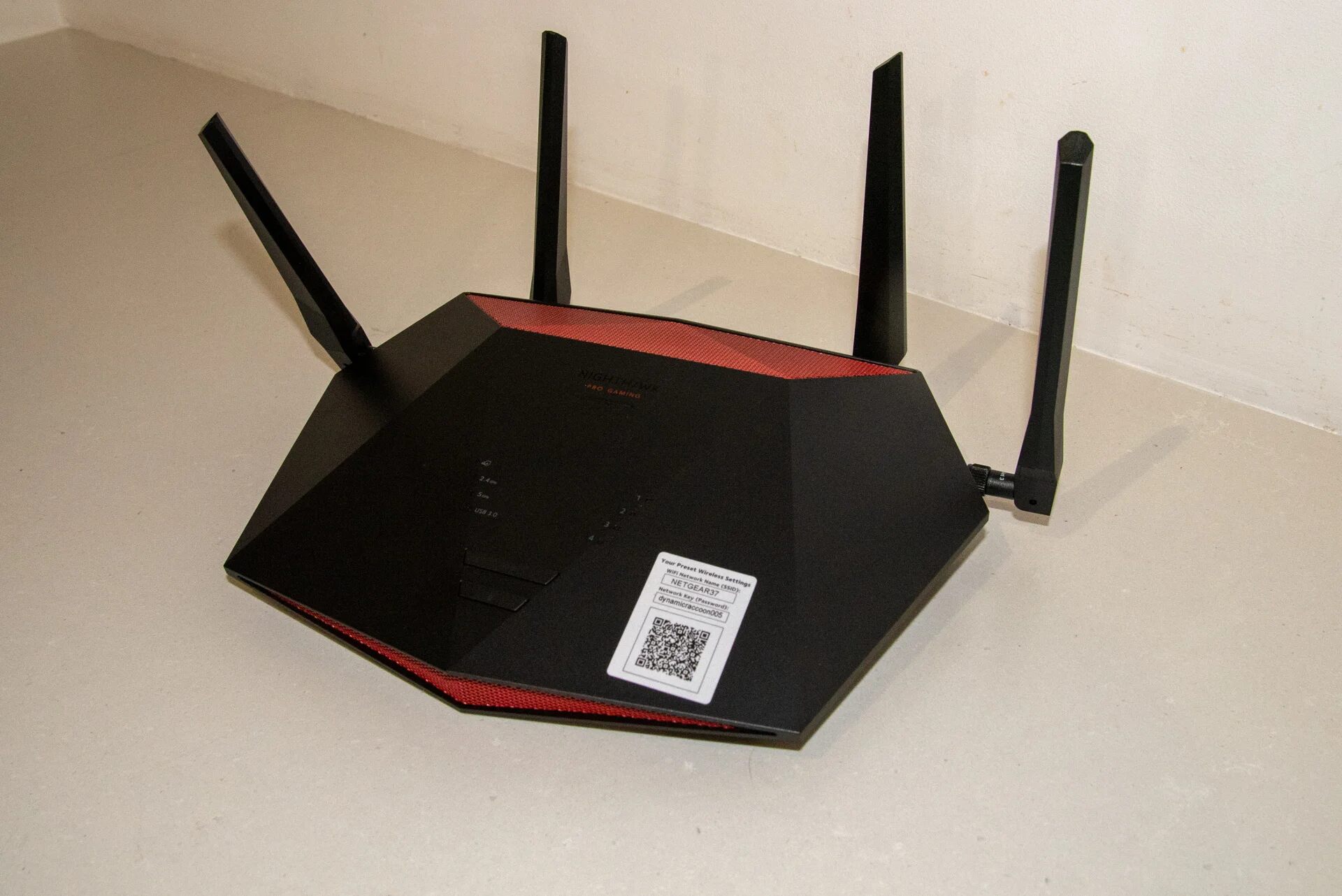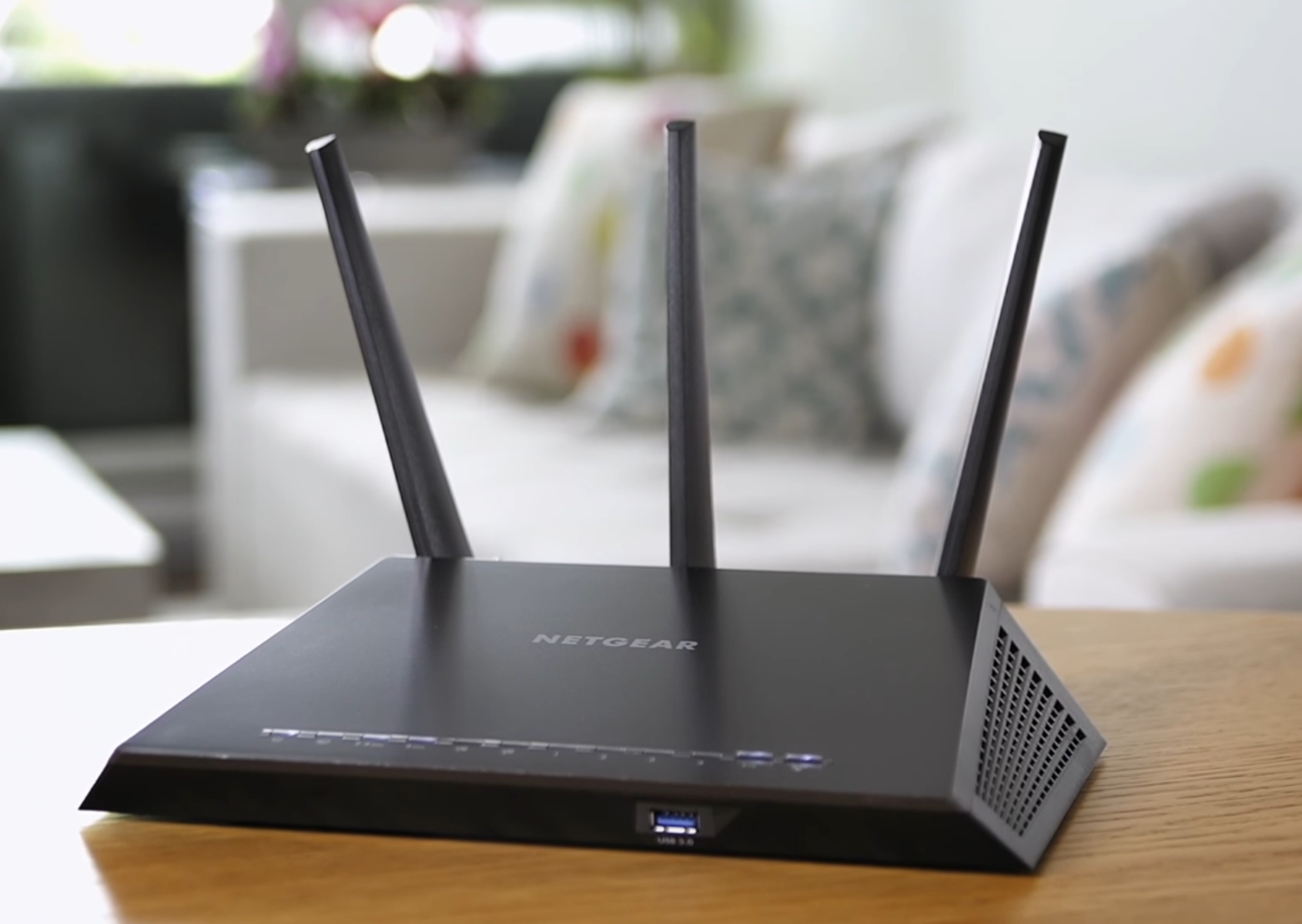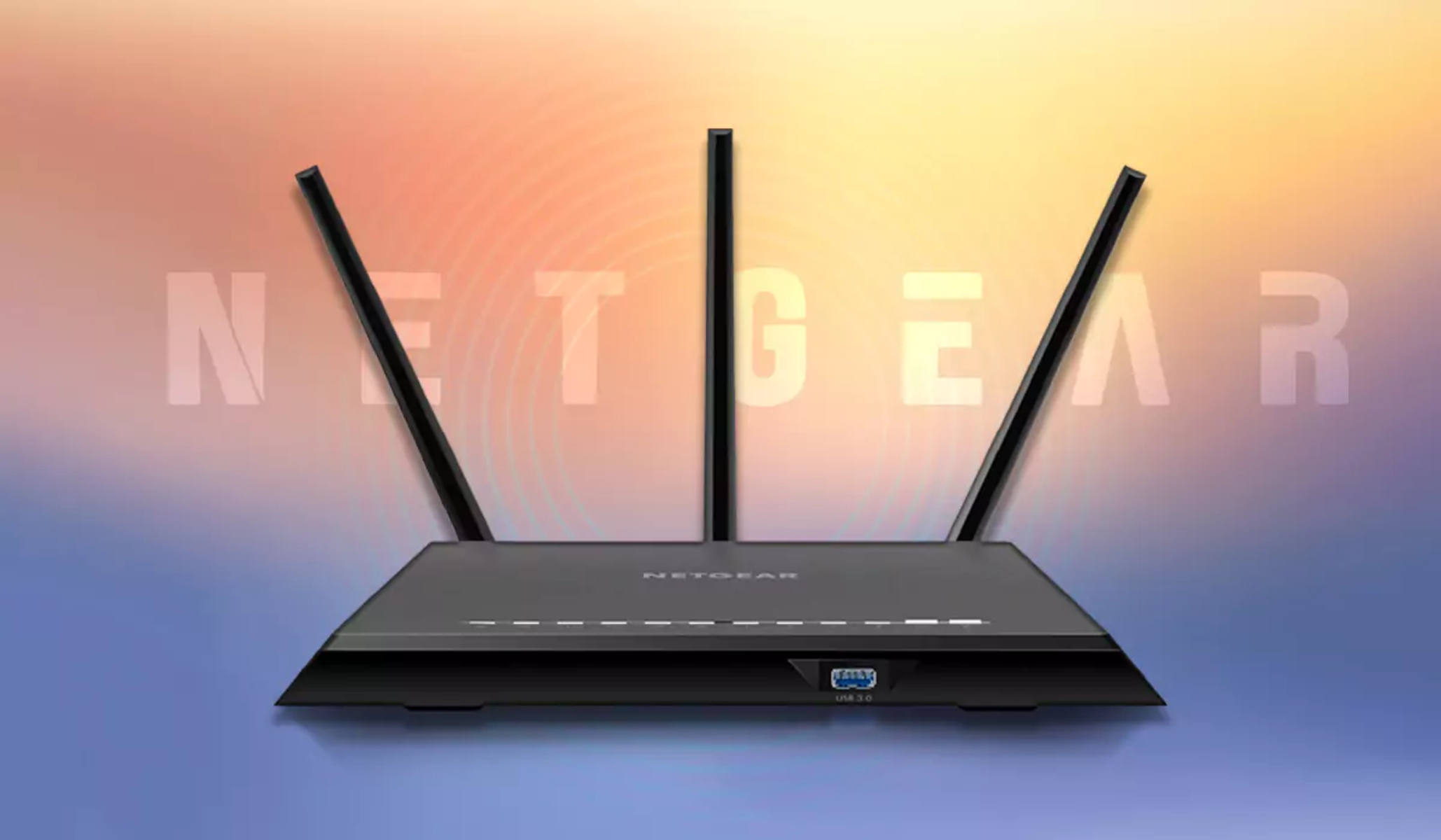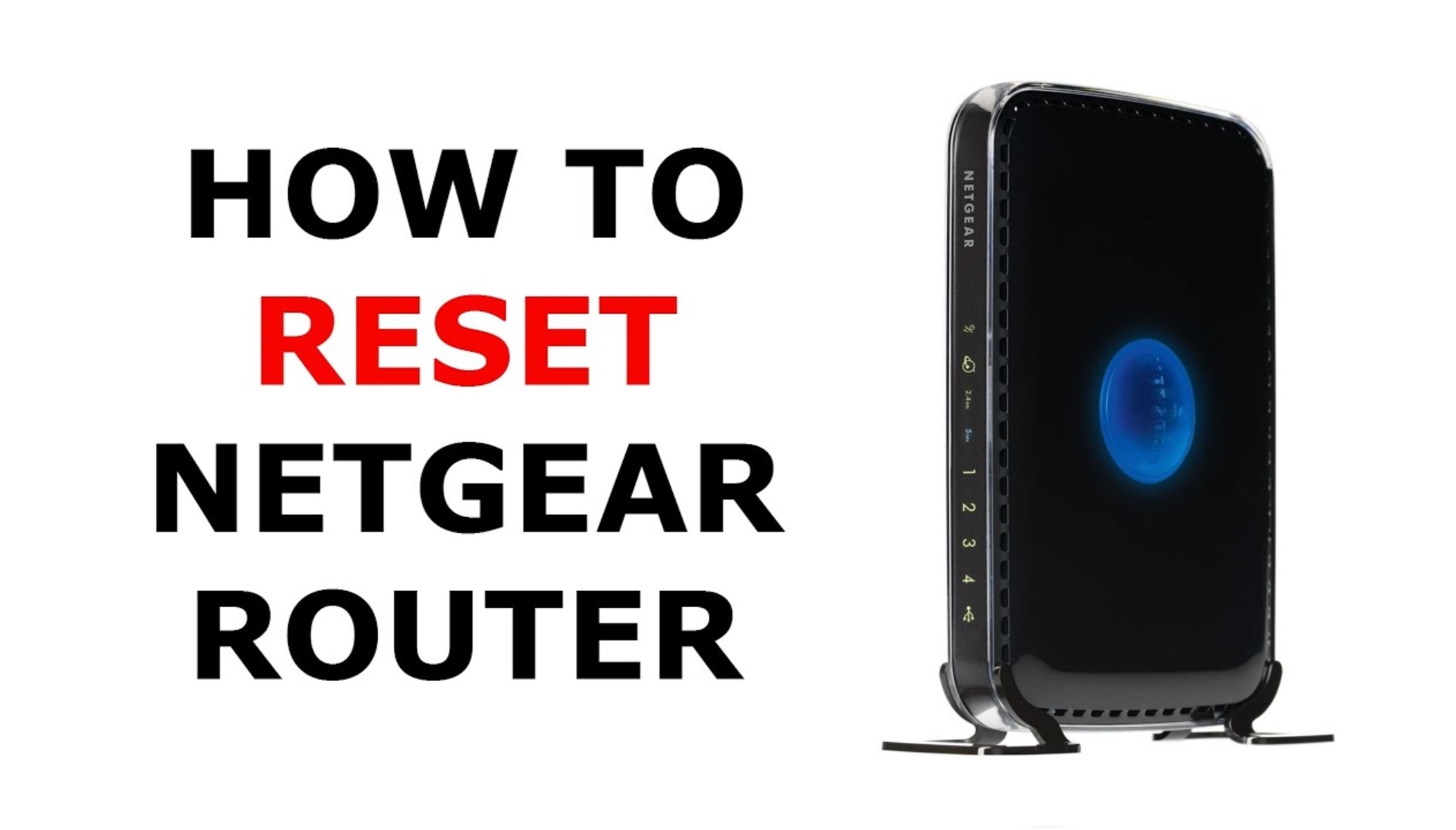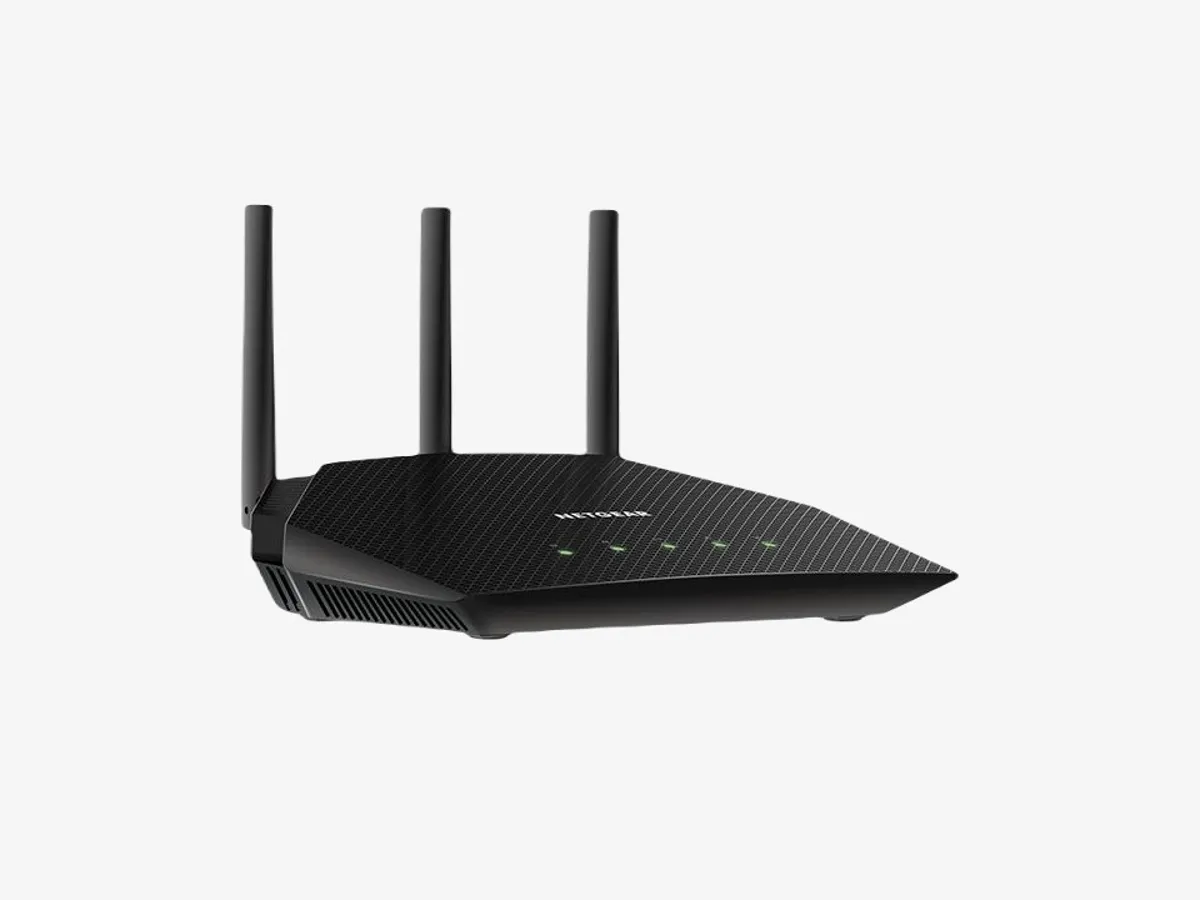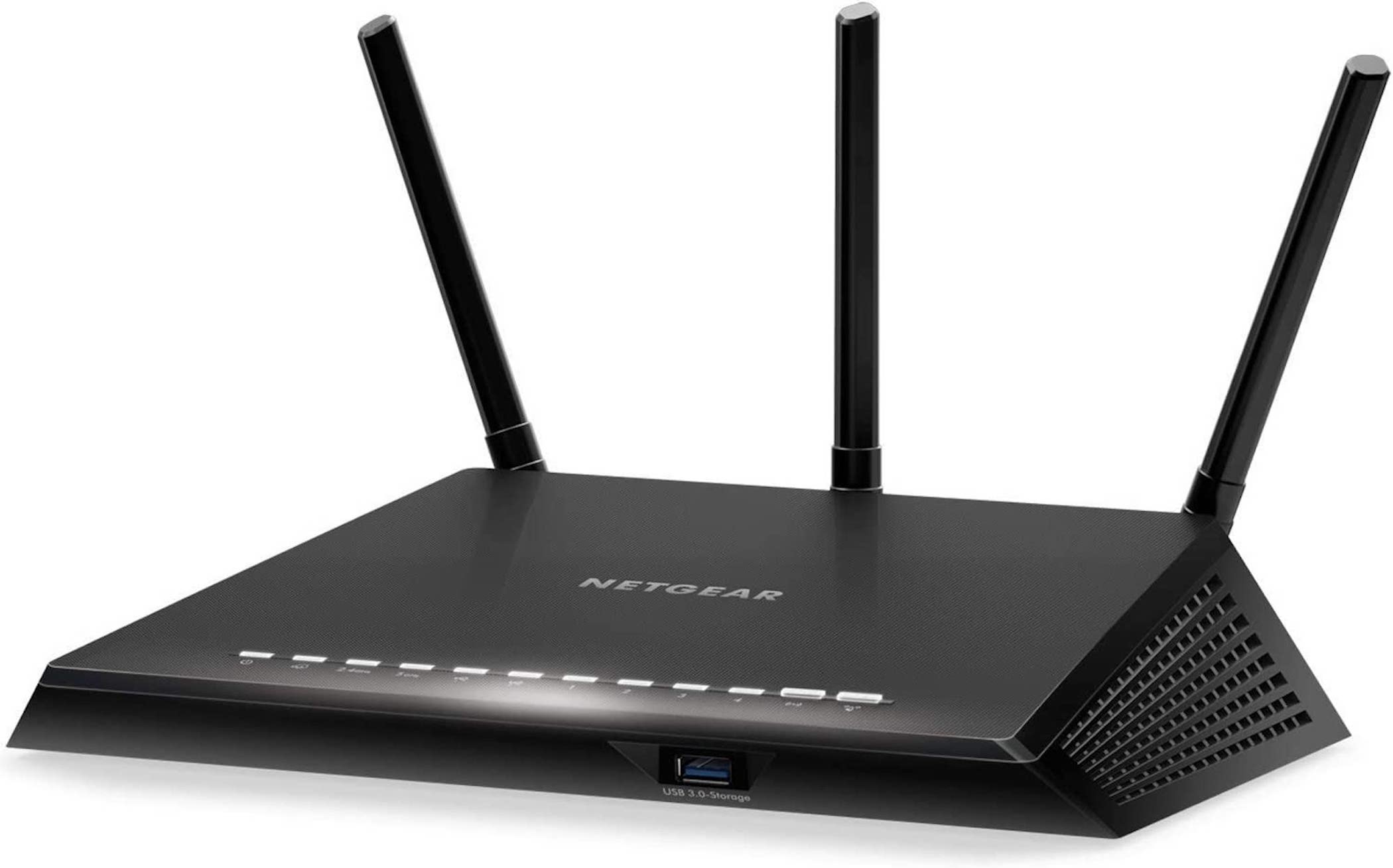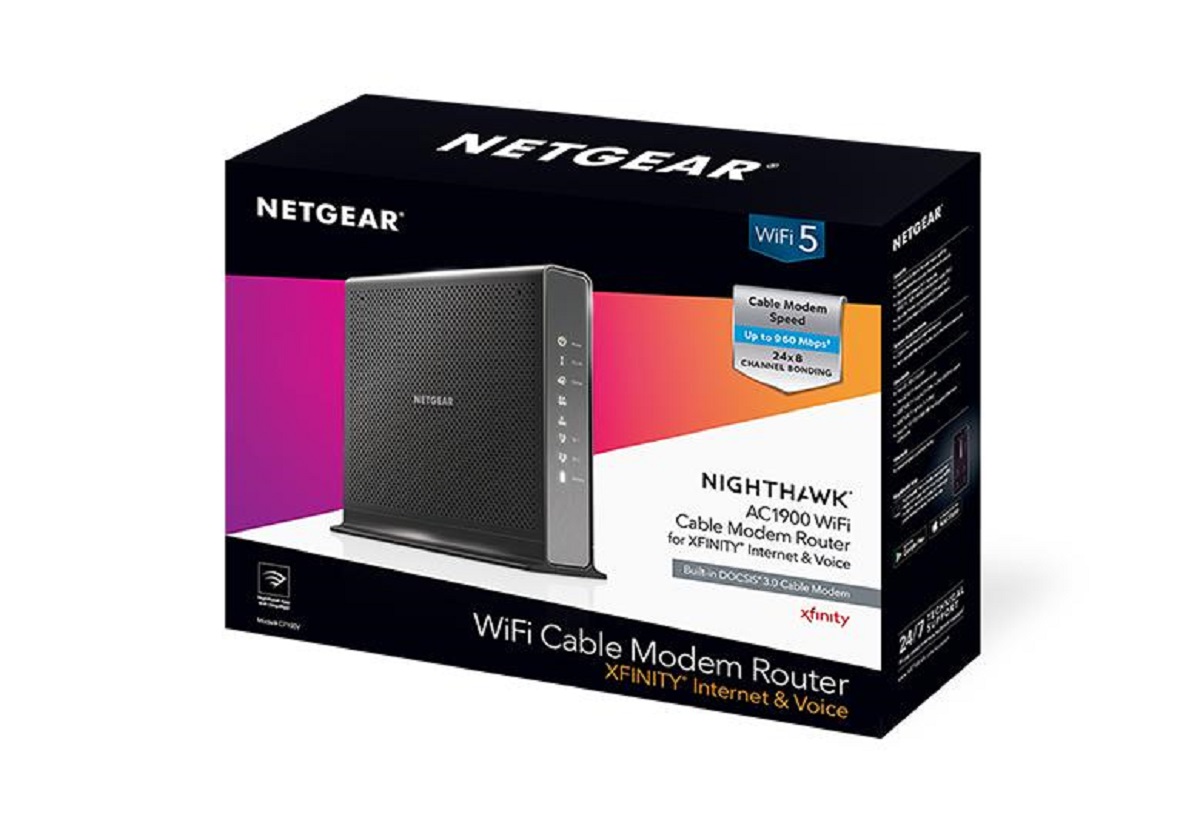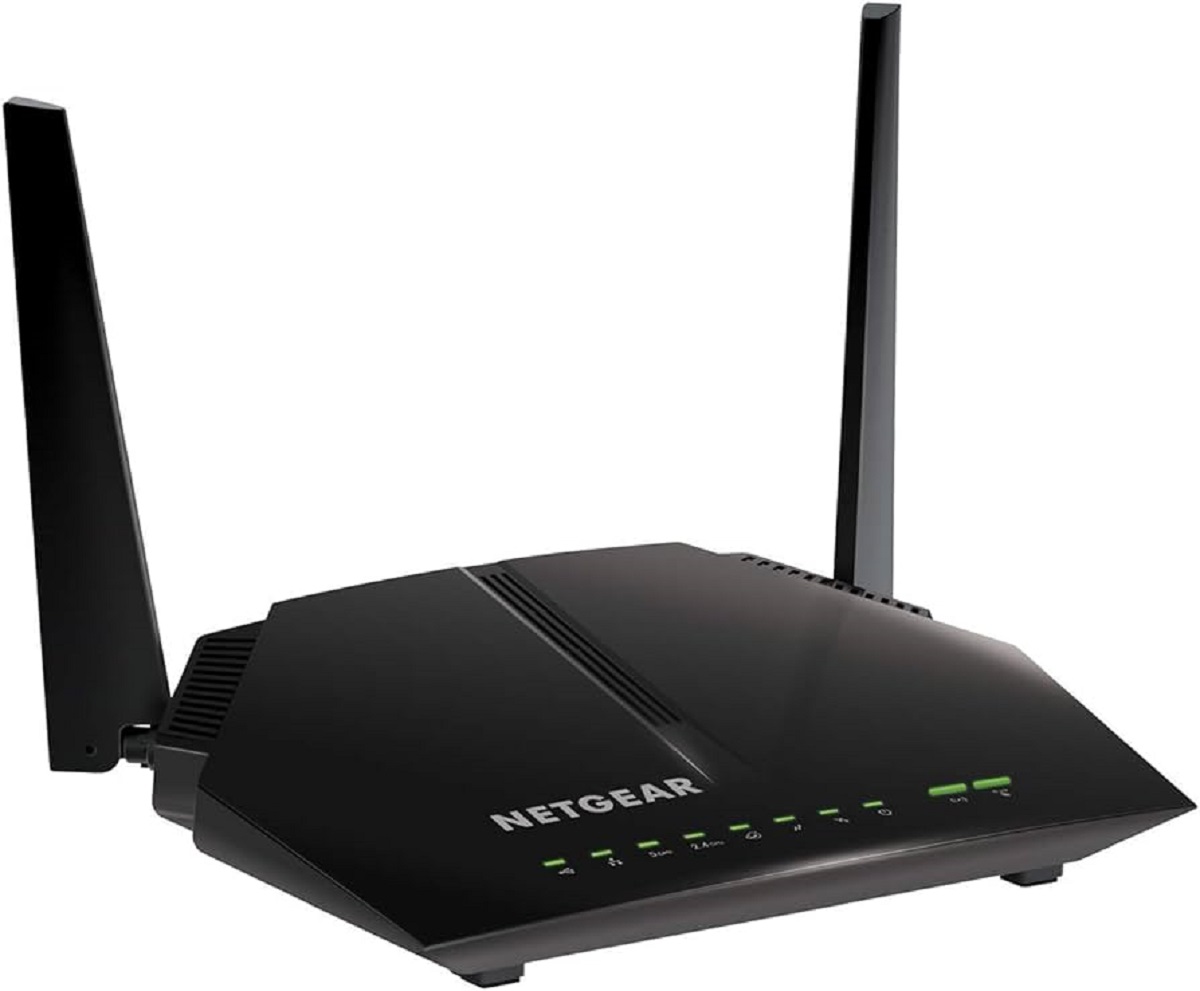Introduction
When setting up a Netgear wireless router for your home or office network, you may come across the term “network key.” Understanding what a network key is and its importance is essential to ensure a secure and reliable wireless connection. In this article, we will explore the concept of network keys and discuss their significance for Netgear wireless routers.
A network key, also known as a wireless network password or security key, is a unique combination of characters that provides authentication and protects your wireless network from unauthorized access. It acts as a barrier, allowing only authorized users with the correct key to connect to your Netgear wireless router and access the internet. Without the network key, outsiders and potential hackers won’t be able to connect to your network or intercept your data.
The network key plays a crucial role in safeguarding your network, ensuring that only trusted devices and individuals can connect to your Netgear wireless router. Just like how you lock your doors to secure your home, the network key acts as a virtual lock for your wireless network.
Netgear wireless routers offer various types of network keys to choose from, depending on your security needs. These include Wired Equivalent Privacy (WEP), Wi-Fi Protected Access (WPA), and Wi-Fi Protected Access II (WPA2). Each type of network key offers different levels of security, with WPA2 being the most secure and recommended option. It encrypts the data transmitted between devices, making it extremely difficult for any unauthorized users to decipher.
Next, we will discuss how to locate and retrieve the network key for your Netgear wireless router. It is crucial to keep this information handy and secure as it is required when connecting new devices or troubleshooting network connectivity issues. We will also explore the steps involved in resetting the network key if you forget or wish to change it for any reason.
Lastly, we will touch upon some common network key-related issues and provide troubleshooting tips to help you resolve them. With these troubleshooting techniques, you can ensure a smooth and uninterrupted wireless connection for all your devices.
Now that we have discussed the importance of network keys let’s dive deeper into finding your network key for a Netgear wireless router and troubleshooting any related issues along the way.
What is a Network Key?
A network key, also referred to as a wireless network password or security key, is a digital string of characters that acts as a security measure to protect your wireless network from unauthorized access. It is a crucial component of ensuring the privacy and security of your network, preventing potential hackers or intruders from gaining access to your personal information or using your network without authorization.
Think of the network key as a virtual lock that allows only authorized individuals or devices to connect to your Netgear wireless router. It acts as a barrier, preventing access to your network by anyone who doesn’t possess the correct key. Without the network key, outsiders won’t be able to connect to your wireless network, ensuring that only trusted devices can access the internet through your router.
Netgear wireless routers offer different types of network keys, including Wired Equivalent Privacy (WEP), Wi-Fi Protected Access (WPA), and Wi-Fi Protected Access II (WPA2). These different types of network keys provide varying levels of security, with WPA2 being the most secure and recommended option. WEP, on the other hand, is the least secure option and is generally not recommended due to its susceptibility to hacking.
When setting up a Netgear wireless router, you will be prompted to create a network key. It’s important to choose a strong and unique network key that is not easily guessable. A strong network key typically includes a combination of uppercase and lowercase letters, numbers, and special characters, and should be at least eight characters long. Avoid using common phrases, words, or personal information as your network key, as these can be easily exploited by potential attackers.
Once you have set up your network key, it is essential to keep it secure and confidential. Treat it as you would with any sensitive password, and avoid sharing it with individuals who are not authorized to access your network. It’s also a good practice to change your network key regularly to enhance the security of your network.
In the next section, we will explore the significance of the network key for a Netgear wireless router, highlighting why it’s crucial to have a strong and secure key to protect your network from potential threats.
Importance of Network Key for a Netgear Wireless Router
The network key for your Netgear wireless router holds significant importance when it comes to securing your network and maintaining the privacy of your data. Let’s explore some key reasons why having a strong and secure network key is crucial:
1. Enhanced Network Security: The primary purpose of a network key is to protect your wireless network from unauthorized access. By using a strong network key, you prevent outsiders from connecting to your network and potentially intercepting your data or engaging in malicious activities. Without a network key, anyone in the vicinity could easily connect to your network, compromising its security.
2. Protection of Personal Information: Unauthorized access to your wireless network could lead to theft or misuse of your personal information. With a network key in place, you minimize the risk of potential hackers gaining access to sensitive data such as your passwords, financial information, or personal files. This protection extends to all devices connected to your network, ensuring the security of your entire digital ecosystem.
3. Prevention of Bandwidth Theft: Another important reason to have a network key is to prevent others from illegally using your internet connection. With a secure key, you can effectively control who can access and utilize your network’s bandwidth. This ensures that you have sufficient bandwidth for your own needs, improving overall network performance.
4. Peace of Mind: Knowing that your network is protected by a strong network key provides peace of mind. You can rest assured that your internet connection and the data transmitted over your network are secure from unwanted intrusions. This is particularly important for businesses or organizations that deal with sensitive client information or confidential data.
5. Compliance with Industry Standards: Using a strong network key aligns with industry best practices and recommended security protocols. It ensures that your network meets the required security standards, such as those set by regulatory bodies or industry-specific compliances. This can be crucial, especially in sectors where data privacy and security are paramount.
6. Easy Device Management: With a network key in place, you have control over which devices can connect to your Netgear wireless router. This allows you to easily manage and monitor the devices accessing your network, ensuring that only authorized devices are connected. It also enables you to troubleshoot connectivity issues more effectively by identifying and managing devices that may be causing problems.
By understanding the importance of a network key for your Netgear wireless router, you can take the necessary steps to ensure that your network is properly secured. In the next section, we will explore the different types of network keys available for Netgear routers, helping you choose the best option for your needs.
Different Types of Network Keys
Netgear wireless routers offer various types of network keys to choose from, each providing different levels of security. It’s important to understand these options to determine which one best suits your specific needs. Let’s explore the different types of network keys available:
1. Wired Equivalent Privacy (WEP): WEP was one of the first encryption methods used for wireless networks. However, it is now considered outdated and less secure compared to newer options. WEP uses a 64-bit or 128-bit encryption key, which can be easily cracked by hackers using specialized tools. It is recommended to avoid using WEP as your network security key, as it offers minimal protection.
2. Wi-Fi Protected Access (WPA): WPA is an improvement over WEP and provides stronger security for wireless networks. It uses a more advanced encryption algorithm called Temporal Key Integrity Protocol (TKIP) to secure data transmitted over the network. WPA also introduced features like passphrase-based key generation, making it easier for users to set up and remember their network keys.
3. Wi-Fi Protected Access II (WPA2): WPA2 is the current industry-standard network security protocol and offers the highest level of security. It uses the Advanced Encryption Standard (AES) for data encryption, providing stronger protection against hacking attempts. WPA2 is the recommended option for securing your Netgear wireless router, as it offers robust security and is widely supported by most devices.
4. Wi-Fi Protected Access III (WPA3): WPA3 is the latest generation of network security protocol and offers enhanced security features over its predecessors. It includes stronger encryption algorithms, simplifies the process of setting up devices securely, and protects against offline password-guessing attacks. However, WPA3 is not yet widely supported by all devices and may require specific hardware and software support to utilize its full benefits.
When choosing a network key for your Netgear wireless router, it is recommended to use the most advanced and secure encryption option available, which is currently WPA2. This ensures that your network is protected with the strongest encryption standards, making it more difficult for unauthorized users to gain access.
It’s important to note that while having a secure network key is essential, it is not the only aspect of network security. Keeping your router’s firmware up to date, using strong and unique passwords for router access, and implementing other security measures such as network segmentation can further enhance your overall network security.
In the next section, we will discuss how to find the network key for your Netgear wireless router, ensuring that you have the necessary information to connect your devices securely.
How to Find the Network Key for a Netgear Wireless Router
Locating the network key for your Netgear wireless router is essential when connecting new devices or troubleshooting network connectivity issues. There are a few different ways to find the network key, depending on your router model and setup. Let’s explore some common methods:
1. Physical Label on the Router: Many Netgear wireless routers have a label on the device itself that displays the network key. Look for a sticker or label on the back or bottom of your router, which may contain important information such as the network name (SSID) and the corresponding network key. This method is convenient as it allows you to easily access the network key without logging into the router’s settings.
2. Router Administration Panel: You can also retrieve the network key by accessing the router’s administration panel, commonly known as the router’s settings or configuration page. To do this, connect your computer to the router using an Ethernet cable or through a Wi-Fi connection. Open a web browser and enter the default IP address of your router (e.g., 192.168.1.1 or 192.168.0.1) into the address bar. This will open the router’s login page, where you will need to enter the administrator username and password. Once logged in, navigate to the wireless settings or security section, where you will find the network key listed.
3. NETGEAR Genie App: If you have the NETGEAR Genie app installed on your mobile device, you can use it to find the network key. Launch the app and select your router from the “My Network” section. Go to the “Security” tab, and here you should find the network key or passphrase listed. This method is particularly useful if you prefer a mobile-based solution and have the Genie app readily available.
4. Contact Your Internet Service Provider: If you are unable to find the network key using the above methods, you can contact your internet service provider (ISP) for assistance. They should be able to provide you with the necessary information, including the network key, for your Netgear wireless router. Be prepared to provide your account details and any other necessary information to verify your identity.
Regardless of the method you use to find the network key, it’s important to keep this information secure. Write it down in a safe and easily accessible place or store it digitally in a secure password manager. Avoid sharing the network key with unauthorized individuals and change it periodically for enhanced security.
In the next section, we will discuss the process of resetting the network key for a Netgear wireless router, which can be useful if you forget the key or wish to change it for any reason.
Resetting the Network Key for a Netgear Wireless Router
There may be instances where you need to reset the network key for your Netgear wireless router. This could be due to forgetting the key or wanting to change it for security reasons. Resetting the network key will require accessing the router’s settings and making the necessary changes. Here’s a guide on how to reset the network key:
1. Access the Router’s Administration Panel: Connect your computer to the router either using an Ethernet cable or through a Wi-Fi connection. Open a web browser and enter the default IP address of your router (e.g., 192.168.1.1 or 192.168.0.1) into the address bar. Log in to the router’s administration panel by entering the administrator username and password.
2. Navigate to the Wireless Settings: Once logged in, find the wireless settings or security section in the router’s configuration page. The exact location may vary depending on the router model and firmware. Look for options related to the network key, such as “Security Key” or “Passphrase.”
3. Reset the Network Key: In the wireless settings, you will find the current network key or passphrase. Delete the existing key and enter a new one. Make sure to choose a strong and secure network key that follows best practices. It should include a combination of uppercase and lowercase letters, numbers, and special characters. Remember to save the changes once you have entered the new network key.
4. Update Connected Devices: After resetting the network key, you will need to update the network settings on all connected devices. Go to the Wi-Fi settings on each device and select your network name. Enter the new network key when prompted, and save the changes. This will allow the devices to reconnect to the network using the updated network key.
Remember to keep the new network key secure and accessible only to authorized individuals. Consider changing the network key periodically to enhance the security of your network.
It’s important to note that resetting the network key will affect all devices connected to the network. Therefore, it is advisable to inform other users connected to the network about the change so that they can update their network settings accordingly.
In the next section, we will discuss some common issues related to network keys and provide troubleshooting tips to help you resolve them.
Troubleshooting Network Key Issues
While network keys are essential for securing your Netgear wireless router, you may encounter issues related to them that can disrupt your network connectivity. Here are some common network key issues and troubleshooting tips to help you resolve them:
1. Incorrect Network Key: If you are unable to connect to your network or experiencing authentication errors, double-check that you are entering the correct network key. Make sure there are no typos or errors in the key. If you have recently reset the network key, ensure that all connected devices are updated with the new key.
2. Weak Signal Strength: Low signal strength can cause connection issues even with the correct network key. Ensure that you are within range of your Netgear wireless router. Consider repositioning the router or adding Wi-Fi range extenders to improve signal coverage in areas with weak connectivity.
3. Interference from Other Devices: Wireless interference from other devices, such as cordless phones, microwaves, or neighboring networks, can impact network connectivity. Reduce interference by keeping these devices away from your router and selecting channels with less congestion in the router’s settings.
4. Outdated Firmware: Ensure that your Netgear wireless router has the latest firmware installed. Outdated firmware can cause network connectivity issues, including problems with network keys. Check the Netgear website for firmware updates specific to your router model and follow the instructions to update it.
5. Router Reboot: If you are experiencing network key-related issues, try power cycling your Netgear wireless router. Turn off the router, unplug it from the power source, and wait for a few seconds. Then, plug it back in and power it on. This can help resolve temporary glitches and restore proper network functionality.
6. Network Reset: If all else fails, you may consider performing a network reset on your Netgear wireless router. This will restore the router to its factory default settings, including the network key. Keep in mind that performing a reset will erase all customized settings, so be prepared to reconfigure your router after the reset.
If you are still experiencing network key issues after attempting these troubleshooting steps, it may be helpful to consult the Netgear support website or contact their customer support for further assistance. They can provide specialized guidance based on your specific router model and troubleshoot any underlying technical issues that may be causing the problem.
By troubleshooting network key-related issues, you can ensure a smooth and uninterrupted wireless connection for all your devices, enhancing the overall performance and security of your Netgear wireless router.
Conclusion
Understanding the concept of network keys and their importance is crucial for securing your Netgear wireless router and maintaining a safe and reliable wireless network. The network key acts as a virtual lock, preventing unauthorized access and protecting your personal information and data from potential threats.
In this article, we discussed the definition of a network key and its significance. We explored the different types of network keys available for Netgear wireless routers, including WEP, WPA, and WPA2, with WPA2 being the most recommended for its enhanced security features.
We also provided guidance on how to find the network key for your Netgear wireless router, whether it be through physical labels on the router, accessing the router’s administration panel, using the NETGEAR Genie app, or seeking assistance from your internet service provider. Additionally, we discussed the process of resetting the network key if needed.
Moreover, we covered common network key issues that may arise, such as incorrect key entry, weak signal strength, interference, outdated firmware, and provided troubleshooting tips to help you overcome these challenges and maintain a stable wireless connection.
By following the information and tips provided in this article, you can ensure that your network key is secure and your Netgear wireless router is properly configured for a safe and reliable wireless network. Remember to update your network key periodically, keep it confidential, and implement additional security measures, such as regularly updating your router’s firmware and using strong passwords for router access, to further enhance the security of your network.
Protecting your wireless network is essential in today’s interconnected world, where data privacy and security are paramount. By taking the necessary steps to secure your network, you can enjoy a hassle-free and safe internet experience for all your connected devices.







